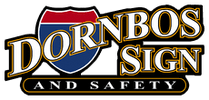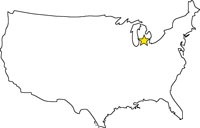Sending Artwork Files to Dornbos Sign Inc.
28th Jan 2015
Files saved on your computer have an extension after them. A dot followed by letters that designate the file type.
For example, JPG,PDF or TIF, just to name a few. It is important to know the differences between your file types.
When using images and graphics, the most important thing to know is the difference between Raster and Vector images.
Raster Files or Bitmaps
Raster (or Bitmap) images are made up many pixels, dots of color that form the image. Photographs are always raster image, most of the images you get online are raster files too. Raster images will lose quality as you enlarge them, creating a low quality, grainy, pixelated image.
Most raster images are .jpg (or JPEG). Most digital cameras store images as jpegs by default, and most images found on the web are jpegs as well because of its small file size.
PNGs and GIFs are a lot like JPGs, but they also support transparency of an image.
Photoshop files, or PSDs, include the original layers of a Photoshop file to be edited, they can only be opened and edited with the Adobe Photoshop program.
Vector Files
Vector images do not use pixels. Instead, they use math equations to form the image. This makes it possible to scaled up or down any size without ever losing quality or becoming pixelated. Which is really nice.
EPS and PDF files are often used when saving vector images. These file types are great for printing large images.
Two other ways to save a vector image are from the native file they are created in .ai (an Adobe Illustrator file) and .cdr (a CorelDraw file). These can be opened using Illustrator or CorelDraw as vector images and individual layers can be edited. Vector files can be opened with any image viewing program. It will only remain vector images when opened with a vector-based program like Illustrator or CorelDraw. Opening a vector image and saving it in a raster program (like the Mac’s Preview, Windows Image Viewer, or Photoshop) will rasterize the image.
When sending files to Dornbos Sign Inc. for printing, it is best to send files in a vector format to allow us to scale them to fit your printing surface without losing image quality. Talk to your Sales Consultant for information on file types and when to use them. Your signs or decals are only as good as the original artwork you give us. We can clean up files or even re-draw them, but of course, that can take time. We will provide you with a print of your sign or decal and allow one revision for free. After that, we have to charge you for computer time. This is just good business, we can't go back and forth changing the artwork over and over again without charging for our graphic artist's time.



